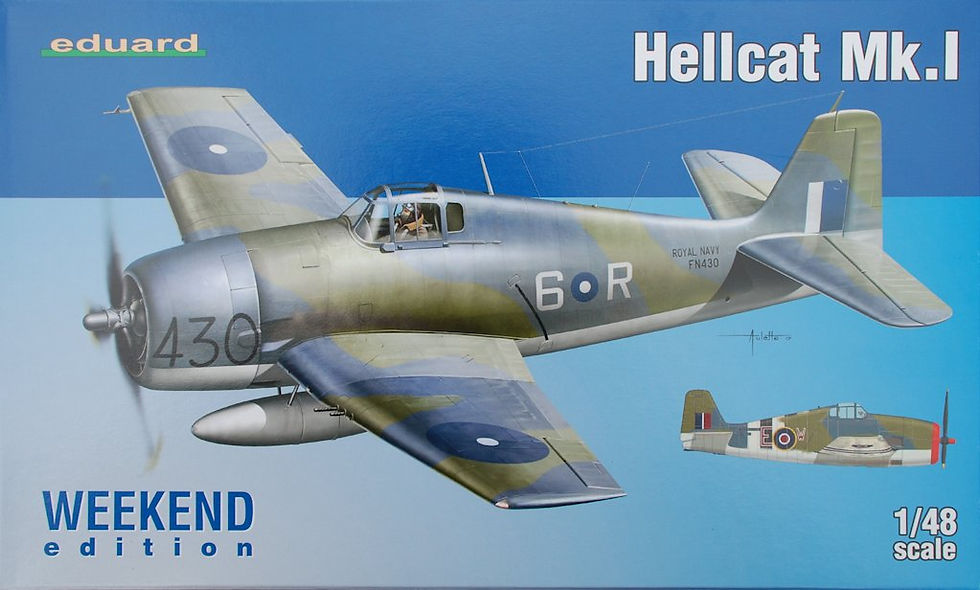Military Model Scene
Robin Buckland's
Hellcat Mk I in 1/48...
...a new Weekend series kit from Eduard

Kit reference 8435 is a recent release from Eduard in their Weekend series of kits. These are straight plastic kits without the addition of the masks and etch details of their ProfiPack series. In this case we have another variation on their Grumman Hellcat Mk.1 with two optional sets of markings for Royal Navy aircraft.
One of the things that strikes me about a 1/48 kit of the Hellcat is just how large it looks. Let's be fair, it doesn't have the slimmer, graceful lines of a Spitfire or Messerschmitt but it does look like a brute of an aircraft, tough, and built to be rugged and a capable carrier borne fighter. They did prove to be very successful in combat.
The kit has a neatly detailed cockpit and a choice of instrument panels depending on whether you want to hand-paints moulded on instruments, are there is a second option with flat surfaces for you to apply the transfers which are supplied for the instrument panel elements. The big radial engine with it's double row of cylinders is another indicator of the brute power of the beast. It isn't a complex model, and once the cockpit interior and the engine are done, the rest of the airframe is quite straightforward to build. I do rather like the detailing on the undercarriage legs. I suspect the one thing some modellers would like to have seen which is not catered for would have been the option to fold the wings, as if on a carrier deck, but they are moulded in the flying position. Fit of parts on Eduard's kits is as good as usual, and you do have the option to fit the canopy in open or closed positions.
The two marking options are similar yet with a nice contrast.
-
A. s/n FN430, flown by P/O Hannay of No 1844 Squadron of the Fleet Air Arm from HMS Indomitable while in the Indian Ocean in August 1944. The aircraft were delivered painted in colours close to the FAA colours of Extra Dark Sea Grey and Dark Green on the upper surfaces, and a colour close to Sky for the undersides. As for the markings, these are the simplified roundels of Dark Blue and White, with the red removed to prevent confusion with the Japanese national marking that they would be meeting in combat.
-
B. s/n JV105, an aircraft from No 800 Squadron flying from HMS Emperor in the Aegean Sea during September 1944. This one features the same camouflage pattern and colours as the first option but has the addition of black and white identification bands around the wings and fuselage. Being an aircraft in the European theatre, the roundels have the red in them this time, and a yellow outline on the fuselage ones as well. There is also an extra bit of colour as the front ring of the cowling and the spinner are also bright red.
The final page of the instructions gives the detailed positioning for the airframe stencils, which are all included on the transfer sheet. Nice to see the Royal Navy markings and it will build into an impressive model of this chunky aircraft.
Thanks to Eduard for this example.
Robin

Box art

Colour and marking options